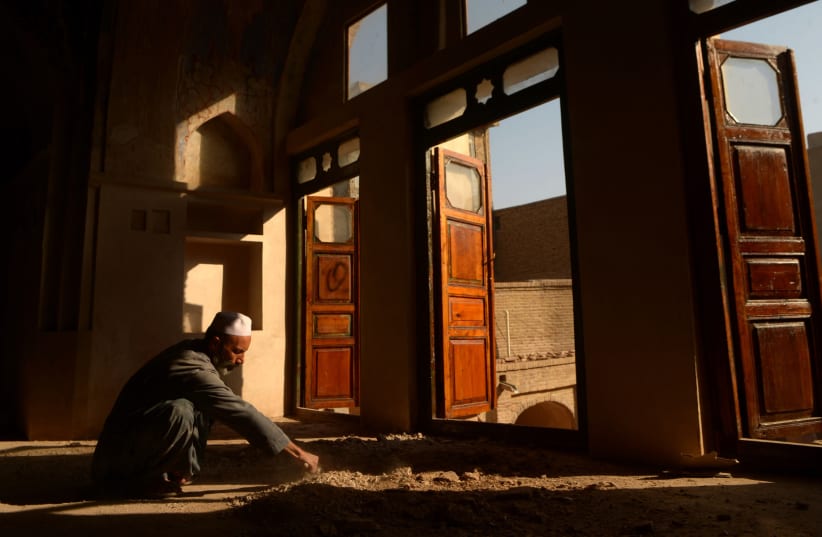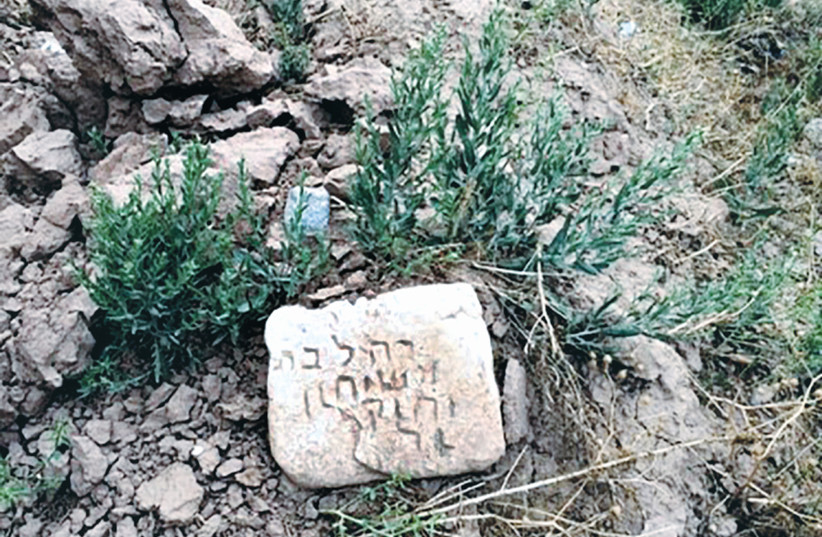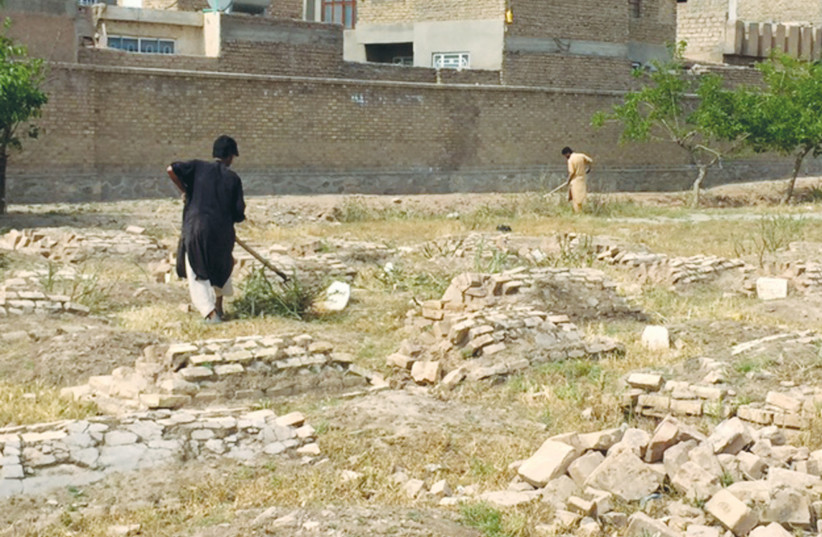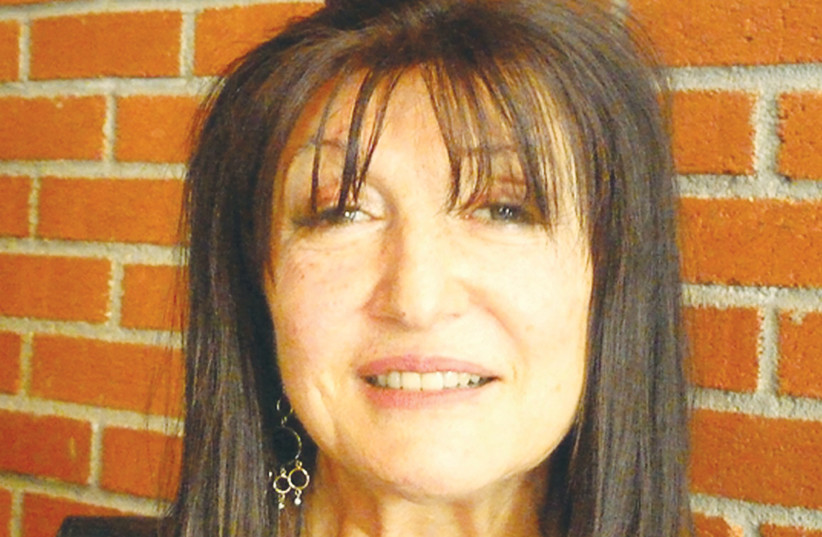NEW YORK – When Osnat Gad first received the mysterious message, she didn’t know how to react.
A successful jewelry designer in New York, Gad is also a proud Afghani Jewish immigrant who as a young child, along with her mother and siblings, immigrated to the US from Herat, Afghanistan, when she was a child in 1959.
The message, sent to her website in 2013, was in broken English from a man (“SJ” for security reasons) that read: “I am from Afghanistan Herat. I want to have contact with Jewish from Afghanistan or Herat city and have a lot of information about Herat Jewish and synagogue in the old city of Herat.”
The Jewish presence in Afghanistan dates as far as 2,700 years ago when the Assyrian assault of Jerusalem in 721 BCE resulted in the forced relocation of the Ten Tribes, now referred to as the Lost Tribes. Jews fleeing Assyrian captivity made their way along the Silk Road through Persia to settle in Afghanistan. There they established flourishing communities in cities like Kabul and Herat.
Jews were admired for their skills, and were well received in the region early on. They continued to be highly regarded, and by the 9th century educated Jews were being recruited as advisers under the Buddhist Ghurid chief Amir Banji (his successors later converted to Islam).
Centuries later, Jews were still being welcomed in the region because of their respected business acumen and their wide-reaching connections in the Silk Road trade routes from the Mediterranean to the Orient. In fact, in the area that we now know as Afghanistan, there was relatively little discrimination, and Jews were encouraged to prosper in order to create more wealth and enrichment for the general population.
A strange ethos developed in the 16th century when it was theorized that the Pashtun tribe of Afghan Muslims descended from Hebrews. It came from idea that the name “Afghan” relates to Afghana, a grandson of King Saul.
The theory has been discounted but perhaps this belief of shared history accounts for the acceptance of Jews in the area. Of course, that is ancient history, but by 1836, it is believed that the population of Jews in western Afghanistan was between 40,000 to as high as 80,000, with Herat at the heart of the community. (This figure has been contested by some scholars as being highly exaggerated.)
Sadly, by the late 19th century, all that changed, and Jews became targets of discrimination and had to endure severe restrictions in housing, dress, occupation and lifestyle. Historical records indicate that by 1936, 3,300 Jews were living in Afghanistan under deplorable conditions, and by the time of the Taliban offensive, only two Jews still resided in the country. The last Afghani Jew, Zablon Simintov, finally departed for Israel in 2021, after abandoning the synagogue he had been maintaining.
Of the four original synagogues in Herat, two were converted to mosques, one turned into a school and the last one, the Yu Aw Synagogue, has become an Islamic cultural center. Yu Aw still has Hebrew inscriptions on its walls and the remnants of a mikveh ritual bath are present.
It has recently been reported that the Aliph Foundation – a Swiss group aimed at protecting cultural heritage sites in conflict areas – has received authorization to restore the building and the mikveh under the protection of the Taliban. Only time will tell if that project is realized.
Synagogues fall into disrepair amid Jewish exodus
With the departure of all Jewish populations from Herat, there was no one left to look after the synagogues and mikvaot, let alone the cemeteries, which had suffered serious disrepair in both Kabul and Herat.
According to ancient burial laws, cemeteries were constructed outside city limits, and the Herat Jewish Cemetery was no different. It is estimated to be between 250-400 years old with a grave count of about 2,000.SHLOMO YEKUTIEL, a Canadian Jew originally from Herat, had become friendly with Gad and instilled in her the desire to honor and preserve her father’s ancestral heritage. Then she received the cryptic message from “SJ.”
Gad was hugely suspicious of SJ and his motives for contacting her. Putting initial concerns aside, Gad, prompted by Yekutiel, responded, and over the next two years, SJ and Gad developed a relationship.
SJ finally convinced Gad that his interest was genuine and provided official documentation that he was an engineer from Herat and had been employed by the Agha Khan Foundation to supervise the restoration of Jewish monuments.
Gad came to believe that preserving the history of the existence of Jews in Herat for posterity was more important than her fears of undertaking such a monumental feat. After due consideration as to the enormous sacrifice taking on this project would require of her, she agreed to step up to the challenge of restoring the Herat cemetery, the very same cemetery where many of Gad’s ancestors were interred.
Gad started a campaign to fund the restoration and reached out to family, friends, descendants of Afghan Jews, Afghan Jewish businessmen she knew from her jewelry business, along with the Afghan Jewish Foundation (established in 1972 in New York) and the Afghan Jewish community in Israel and London.
Miraculously they all contributed to the project. But raising the money, while a major part of the challenge, was just one step in actually accomplishing the job.
First she had to get authorization from the US State Department to work in a foreign country with which it has no diplomatic ties. She also needed to find the proper authorities in Kabul to sign off on the project.
Amazingly, with tenacity and determination, she worked with government officials in both countries and was granted the necessary papers and approvals to proceed with the restoration.
Politically unable to be on the ground in Afghanistan, Gad had to trust SJ to handle the restoration of the cemetery according to her design while she worked on the restoration of her home in New York, which had been destroyed by Hurricane Sandy.
In her mind, the two multi-year projects became one and inseparable. While trying to obtain permits to rebuild her home, she was also trying to get permission from the State Department, the Afghan Consulate in New York and the Ministry of Hajj and Awqaf in Kabul and Herat to work on restoring the cemetery.
Furthermore, the reconstruction of the cemetery had to follow the proper Jewish religious laws, which Gad was unfamiliar with, but which SJ, a Muslim, was expected to honor. In 2019, the five-year project was completed and included the building of four walls and an entry gate that encircles the cemetery.
Once the walls were built, Yekutiel undertook to restore 40 tombs that had been completely shattered. Additionally the Abdelaziz Muslim family that has maintained custodial care of the cemetery for the past 150 years has now been officially engaged to live on the premises and protect it.
The current custodian is Jalilahmed Abdelaziz, and he recalls family members trying to protect the cemetery even when it was all but abandoned by Jews.
Over the years, SJ and Gad have learned to love and trust each other and call each other sister and brother. How rare, these days to have a loving friendship between a Muslim Afghani man who speaks almost no English and a Jewish American woman that speaks only Dari, a dialect of the Persian language spoken by Afghani Jews.
Today, Gad has finished curating an exhibit titled The Hidden World of Afghan Jews, which features many artifacts and photographs describing the peaceful, prosperous and elegant world that for a period of time was the life enjoyed by Afghani Jews.
It’s slated to open next year at New York’s American Sephardi Federation, partner of the Center for Jewish History, and includes the unbelievable story of her joint efforts with SJ to restore Herat’s ancient Jewish cemetery.




